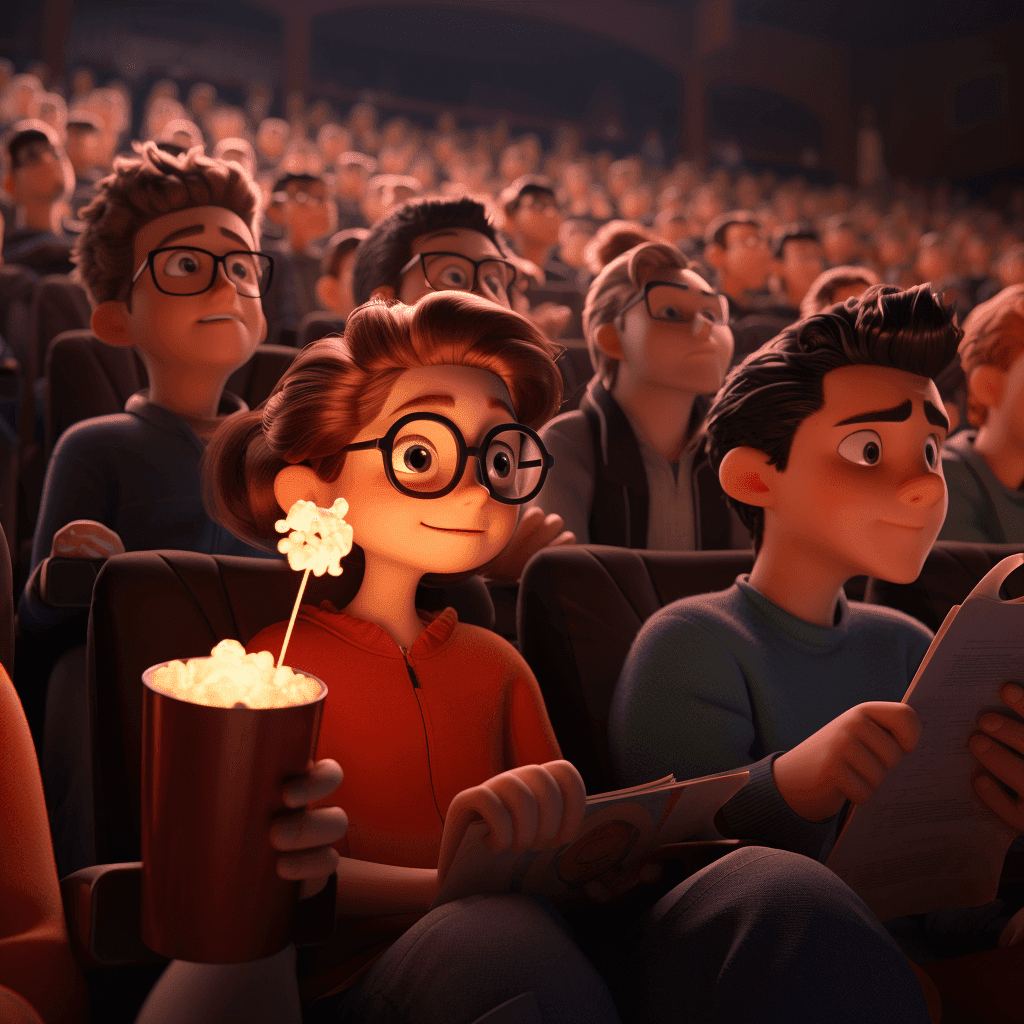What's After the Blog?
Reboots
Reinventing the Sequel: Successful Second Acts in Film
Dive into the world of film sequels with our comprehensive analysis of how successful second acts in movies like The Dark Knight and Terminator 2 have redefined and revitalized cinema.
May 5, 2024

Movies mentioned in this article
Reinventing the Sequel: Successful Second Acts in Film
Introduction
Sequels in the film industry often carry the heavy burden of expectations – from continuing a story that captivated audiences to expanding a universe that fans have grown to love. The history of cinema is replete with sequels; some have soared to new heights, while others have faltered, unable to capture the magic of their predecessors. The evolution of sequels has been a fascinating journey, from mere commercial endeavors to artistic expressions that sometimes even surpass the original. In the realm of sequels, there’s a delicate balance between innovation and consistency, a dance between the familiar and the new.
The concept of a sequel is not just about extending a story; it’s about deepening the narrative, enriching character arcs, and sometimes, offering a fresh perspective on the world established in the first film. Sequels like The Dark Knight not only escalated the stakes of Batman’s journey but also introduced a new level of moral complexity with the Joker. Similarly, The Godfather Part II did not merely continue the Corleone family saga; it delved deeper into the psyche of its characters, juxtaposing the rise of Vito and the fall of Michael Corleone. These films didn’t just extend their respective stories; they expanded the thematic and emotional landscapes of their universes.
The Art of Sequel Making: More Than Just a Follow-Up
Creating a sequel that resonates with audiences is a formidable task. It requires a deep understanding of what made the original film successful while also finding new territories to explore. The most successful sequels manage to strike a fine balance, retaining the core elements that fans loved in the first film, while introducing new characters, settings, and plots that add depth and breadth to the franchise.
- Character Development: In a successful sequel, characters undergo significant development, often facing new challenges that test their limits. For example, in Aliens, Ripley transforms from a survivor to a warrior, adapting to a new role that intensifies her character arc.
- Expanding the Universe: Good sequels expand the universe of the original film, exploring new aspects of the world. Star Wars: The Empire Strikes Back introduced audiences to new planets like Hoth and Dagobah, broadening the scope of the Star Wars universe.
- Introducing New Elements: Sequels that dare to introduce new elements – be it characters, themes, or even a shift in genre – often stand out. Terminator 2: Judgment Day shifted from the horror/thriller tone of the first film to more action/sci-fi, introducing the iconic T-1000 and expanding the series’ mythology.
Yet, the art of making a sequel is not just about what is added, but also about what is retained. Maintaining the essence of the original, be it the tone, style, or spirit, is crucial. Sequels that disregard the foundational elements of their predecessors often struggle to connect with their audience. The secret lies in finding that sweet spot – where the new enriches the old, creating a seamless yet innovative continuation of the story.
Breaking the Sequel Curse: When Sequels Surpass Expectations
The term ‘sequel curse’ is often tossed around in the film industry, hinting at the prevalent notion that sequels are typically inferior to their originals. However, several sequels have defied this curse, not only meeting but surpassing the high bars set by their predecessors. These films stand as testaments to the potential of sequels to elevate a franchise and even redefine it in the eyes of both critics and audiences.
- Surpassing the Original: Some sequels, such as Terminator 2: Judgment Day, have outdone their originals in terms of storytelling, technical innovation, and character development. James Cameron’s sequel brought groundbreaking CGI and a more complex narrative, cementing its place as a landmark in sci-fi cinema.
- Deepening the Story: Other sequels, like Toy Story 2, delve deeper into their characters’ psyches, offering more emotionally resonant and mature themes. This approach not only appeals to the original audience as they grow but also attracts a new generation of viewers.
- Expanding the Genre: Some sequels expand or shift the genre of their franchise, breathing fresh life into the narrative. For instance, Captain America: The Winter Soldier transitioned from a period piece to a political thriller, adding depth and complexity to the Marvel Cinematic Universe.
These sequels remind us that a second act can be more than just a follow-up; it can be an opportunity to explore uncharted territories, deepen character arcs, and push the boundaries of the original concept, creating a lasting impact on their respective genres and audiences.
Innovation in Continuation: Introducing New Elements
Innovation is key to the success of a sequel. The challenge lies in introducing new elements that resonate with the audience while maintaining the essence of the original. This balance is delicate; tipping too far in either direction can lead to a sequel that feels disconnected or overly repetitive.
- New Characters and Relationships: Introducing new characters can add fresh dynamics to the narrative. For example, The Empire Strikes Back introduced Lando Calrissian, expanding the character dynamics and adding new layers to the story.
- Exploring Different Settings: Transporting characters to new settings can offer new challenges and opportunities for growth. The shift from the claustrophobic corridors of the Nostromo in Alien to the expansive colony on LV-426 in Aliens provided a completely different backdrop and tone for the sequel.
- Thematic Evolution: Evolving the themes of the original film can give the sequel a distinct identity. Mad Max: Fury Road elevated the franchise with its themes of survival, redemption, and resistance, making it stand out not just as a sequel but as a cinematic masterpiece in its own right.
The key to successful innovation in sequels lies in respecting the source material while daring to explore new creative avenues. This approach ensures that the sequel remains true to the spirit of the original while offering something new and exciting to the audience.
The Role of Directors and Writers in Crafting a Worthy Sequel
The success of a sequel often hinges on the vision and execution of its directors and writers. These creative minds are tasked with the challenge of revisiting a world that has already won the hearts of audiences, yet they must find a way to tell a new story that remains true to the original while also being distinct and engaging. The directors and writers of successful sequels are often those who have a deep understanding and respect for the source material but are also willing to take risks and push boundaries.
- Visionary Directors: Directors like James Cameron and Christopher Nolan have demonstrated an exceptional ability to craft sequels that not only expand their original stories but also elevate the entire franchise. Cameron’s Aliens and Nolan’s The Dark Knight are prime examples of sequels that enhanced their respective series with deeper themes and more complex narratives.
- Skillful Writing: The role of writers is equally crucial in sequel-making. Scripts that introduce new conflicts, deepen character arcs, and explore uncharted thematic territories are key to a sequel’s success. Leigh Whannell’s work on Saw II added new layers to the horror franchise, while maintaining the core elements that fans loved about the original.
- Balancing Innovation and Tradition: The best sequels are those where the directors and writers strike a perfect balance between the familiar and the new. This balance is what makes a sequel feel like a continuation of a beloved story, rather than a disconnected addition.
The collaborative effort of these creative professionals is what ultimately shapes a sequel’s impact. Their ability to navigate the challenges of sequel-making determines whether a film will be remembered as a worthy successor or a forgettable attempt to recapture past glory.
Fan Expectations and Reception: The Audience’s Role
The role of the audience in the success of a sequel cannot be understated. Fans of the original film come with expectations, hopes, and a deep connection to the story and its characters. The reception of a sequel, therefore, often hinges on how well it resonates with these fans. Understanding and managing fan expectations is a delicate part of the sequel-making process.
- Meeting Expectations: Sequels that manage to meet or exceed fan expectations often achieve great success. Spider-Man 2, for instance, was hailed for its deeper exploration of the characters and more complex storytelling, satisfying fans of the original film.
- Surprising the Audience: On the other hand, some sequels succeed by defying expectations and taking the story in unexpected directions. Star Wars: The Last Jedi took bold narrative risks that, while divisive, certainly got people talking and rethinking the possibilities of the Star Wars universe.
- Feedback and Engagement: In today’s age of social media, audience feedback is immediate and widespread. This feedback loop can influence perceptions of a sequel and even impact future installments of a franchise.
The audience’s role in a sequel’s success is a dynamic and influential one. Their engagement and response can elevate a sequel to cult status or condemn it to obscurity. As such, understanding and engaging with the audience is a crucial aspect of modern sequel-making.
Financial Success vs. Artistic Merit: The Sequel Dilemma
The success of a sequel is often measured in two ways: financial performance and artistic merit. While the box office numbers are a tangible metric, assessing a sequel’s artistic value can be more subjective. This dichotomy presents a unique challenge in sequel-making, where the goal is to satisfy both commercial and creative aspirations.
- Box Office Hits: Some sequels achieve remarkable financial success, indicating their widespread appeal. Jurassic World, for instance, broke box office records, capitalizing on the nostalgia and love for the original while offering a visually stunning and thrilling experience.
- Critical Acclaim: Artistic merit, though, is a different ballgame. Sequels like Blade Runner 2049 received critical acclaim for their thoughtful storytelling and visual artistry, despite not being major commercial hits.
- Striking a Balance: The ideal sequel is one that achieves both financial success and critical acclaim. The Dark Knight is a stellar example, as it not only dominated the box office but also received widespread critical acclaim for its sophisticated plot, character development, and thematic depth.
The sequel dilemma often revolves around the question of whether to prioritize commercial appeal or artistic integrity. The most memorable and celebrated sequels are typically those that manage to strike a balance between these two aspects, thereby achieving both financial success and a lasting artistic impact.
Conclusion
In conclusion, the art of creating a successful sequel involves a complex interplay of factors - understanding the essence of the original film, introducing innovative elements, balancing fan expectations, and achieving both financial success and artistic merit. Sequels have the potential to not just continue a story, but to expand it, deepen it, and sometimes, even redefine it. They can be more than just commercial ventures; they can be artistic endeavors that enrich and elevate the original narrative.
As we reflect on the various aspects that contribute to a sequel’s success, it’s clear that the most impactful sequels are those that maintain the soul of their predecessors while charting new territories in storytelling. They remind us that at its best, a sequel can be a remarkable cinematic achievement, offering audiences a chance to revisit beloved worlds in new and exciting ways. For more insights into the fascinating world of cinema, including explorations of movie sequels and their impact, visit What’s After the Movie (ATM) for more engaging content.
Invitation to Further Exploration
In the ever-evolving landscape of cinema, sequels will continue to be a staple, offering both challenges and opportunities for filmmakers and audiences alike. We invite you to keep exploring the vast and varied world of film sequels, to understand their nuances and appreciate their contributions to the cinematic universe. Every sequel tells a story not just of its characters but of its time, its audience, and the ever-changing dynamics of movie-making.
- Explore More on ATM: Dive deeper into the world of film sequels and their rich history on ATM, where you can explore a wide array of movies, their sequels, and the fascinating stories behind them. It’s a treasure trove for anyone passionate about cinema and its evolution.
- Join the Conversation: We also encourage you to join online discussions and forums about your favorite sequels. Share your thoughts, engage in debates, and get insights from fellow movie enthusiasts. Your perspective can add a new layer to the understanding of these films.
Sequels are more than just continuations; they are a testament to the enduring impact of stories and characters that captivate our imagination. As we continue to explore this genre, we uncover the many ways in which sequels can reinvent, redefine, and rejuvenate the narratives we love.
Closing Thoughts
As we wrap up our exploration of successful second acts in film, it’s evident that the world of sequels is as diverse as it is dynamic. From groundbreaking blockbusters that redefine a genre to introspective follow-ups that delve deeper into character and story, sequels offer a unique lens through which we can view the evolution of storytelling in cinema. They challenge filmmakers to push creative boundaries and audiences to expand their horizons of expectation and enjoyment.
- The Future of Sequels: Looking forward, the landscape of film sequels is set to evolve further, embracing new technologies, narratives, and perspectives. This evolution promises to bring even more exciting, thought-provoking, and entertaining second acts in the world of cinema.
- A Journey Worth Taking: For every movie fan, the journey through film sequels is one of discovery and rediscovery, a chance to revisit beloved worlds and characters, and to see them in a new light.
In closing, we reflect on the power of sequels to continue stories that resonate with us, to bring back characters we’ve grown to love, and to take us on new adventures. They remind us why we fell in love with the movies in the first place and why we keep coming back for more.
Continue reading

What's After the Movie?
Not sure whether to stay after the credits? Find out!
Check out our other apps:
Actors
Companies
Latest Movies
© 2025 What's After the Movie. All rights reserved.


















